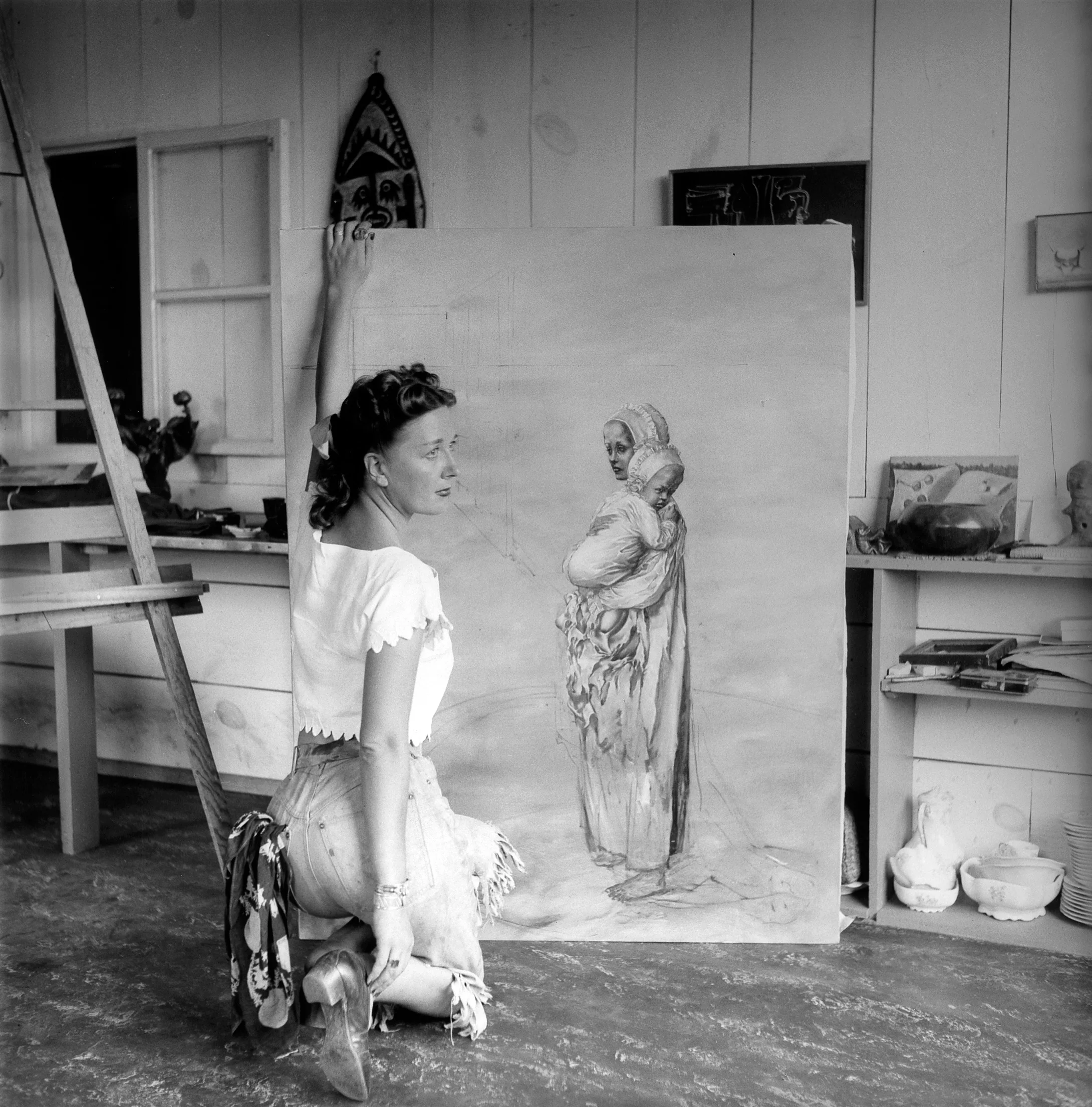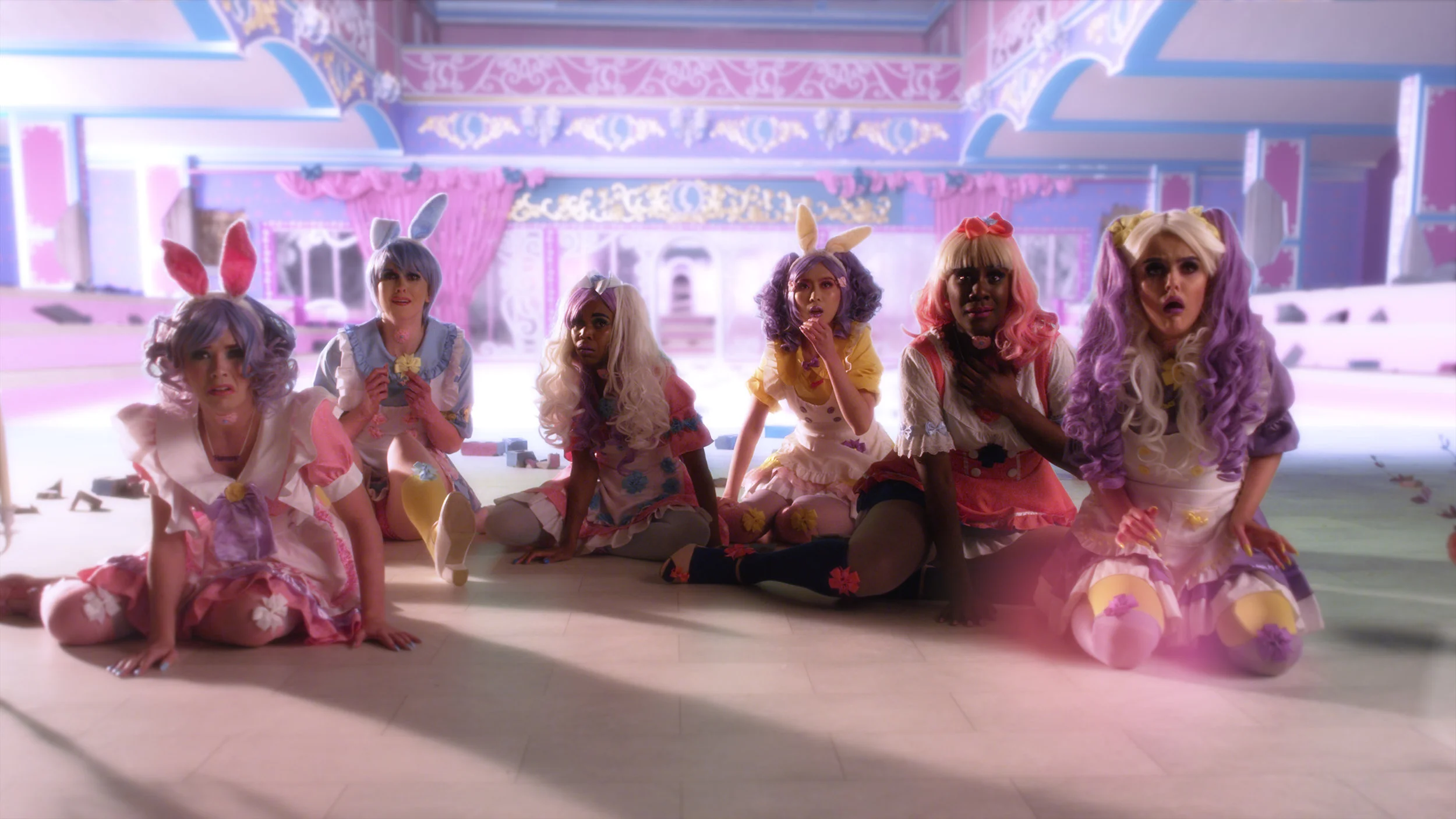Behind the invisible door, another door. The uncanny work of Dorothea Tanning at Tate Modern
““I wanted to lead the eye into spaces that hid, revealed, transformed all at once and where there could be some never-before-seen-image”. ”
With these words Dorothea Tanning described her oeuvre, surveyed at the Tate exhibition. A wonderfully hypnagogic and eerie journey through the seventy-year career of the great Surrealist artist.
Tanning, born in the little town of Galesburg, Illinois, was an incredibly versatile and prolific artist, working as a painter, sculptor and writer. Self-taught, she lived between the US and France. Visiting the exhibition is a tremendous chance to celebrate her rich and intense collection, that, as happened to many female artists’ work, remained for a long time secondary to that of her male colleagues.
Indeed, it is particularly interesting how the artist combines the Surrealist narrative and her own complex, feminine gaze and sensibility. To start with, in the first exhibition room, her iconic self-portrait Birthday (1942) represents her own “birth” as a Surrealist. The artist is depicted standing in front of an endless recession of open doors, almost a gatekeeper to the spellbinding maze of the subconscious dream. Particularly interesting is her skirt (made of foliage in which human and phallic figures are hidden) and the furry creature at her feet - unsettling but harmless, almost like a tamed griffin.
The painting had also an important relevance in her personal life, because it was the catalyst of her first meeting with her husband-to-be, the German painter Max Ernst: “It was snowing hard when he (Max Ernst) rang the doorbell. Choosing pictures for a show to be called Thirty Women (later Thirty-One Women), he was a willing emissary to the studios of a bouquet of pretty young painters who, besides being pretty, which they couldn’t help, were also very serious about being artists.
“Please come in,” I smiled, trying to say it as if to just anyone. (...) We moved to the studio, a livelier place in any case, and there on an easel was the portrait, not quite finished. He looked while I tried not to. At last, “What do you call it?” he asked. “I really haven’t a title.” “Then you can call it Birthday.” Just like that.” (from Between Lives: An Artist and Her World, D. Tanning
The exhibition then guides the audience through the years of the relationship with Ernst. They moved to Arizona in the mid-1940s, and then in France in the 1950s. Especially in this last period, the artist represents and disrupts the ordered iconography of the family and domestic interiors. Particularly the piece Portrait de Famille (Family Portrait) (1954) is emblematic of this intention, with the white cloths of the dining table becoming a surreal space of bizarre symbols. She describes the painting as “generally a comment on the hierarchy within the sacrosanct family”.
The artist rejection of the traditional concept of family and the female in the domestic role is to be quite clearly found in different works across her whole career. Especially the soft sculpture Emma (1970), that is shaped as a round belly emerging from laces, is a statement in that direction. It’s named after the protagonist of Flaubert’s Madame Bovary. Emma is an unsatisfied wife and mother, who looks for escape and redemption from her constrained condition through literature and affairs.
Certainly striking is the piece Hōtel du Pavot, Chambre 202 (1970-3),a sculptural installation where soft female bodies break the hotel room’s wallpaper, representing violence and banality together. Also very interesting and proof of Tanning’s creative versatility and skills are the costume and set design drawings and paintings for ballets.
The exhibition is a compelling fairytale that talks directly to an inner level in the audience’s perception; a gothic and surreal depiction of the womanhood experience. It is delicate and exceptionally singular in an unforgettable experience. A visit is very much recommended!
Photography
Dorothea Tanning (1910 – 2012) Birthday 1942 Oil paint on canvas 1022 x 648 mm Philadelphia Museum of Art (Philadelphia, US)
© DACS, 2019
Dorothea Tanning (1910 – 2012) La Truite au bleu (Poached Trout) 1952 Oil paint on canvas 400 x 550 mm Michael Wilkinson, New Orleans, L.A © DACS, 2019
Dorothea Tanning, Great River, Long Island 1944.The Destina Foundation, New York © Unknown
Front Cover - Dorothea Tanning, Sedona, Arizona, USA, 1946by © Lee Miller Archives, England 2019. All rights reserved. leemiller.co.uk.










